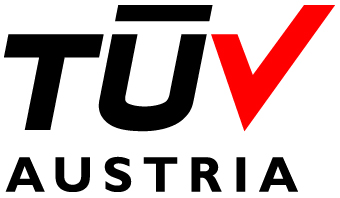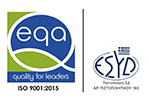Attractions of Thessalia
LOCATION
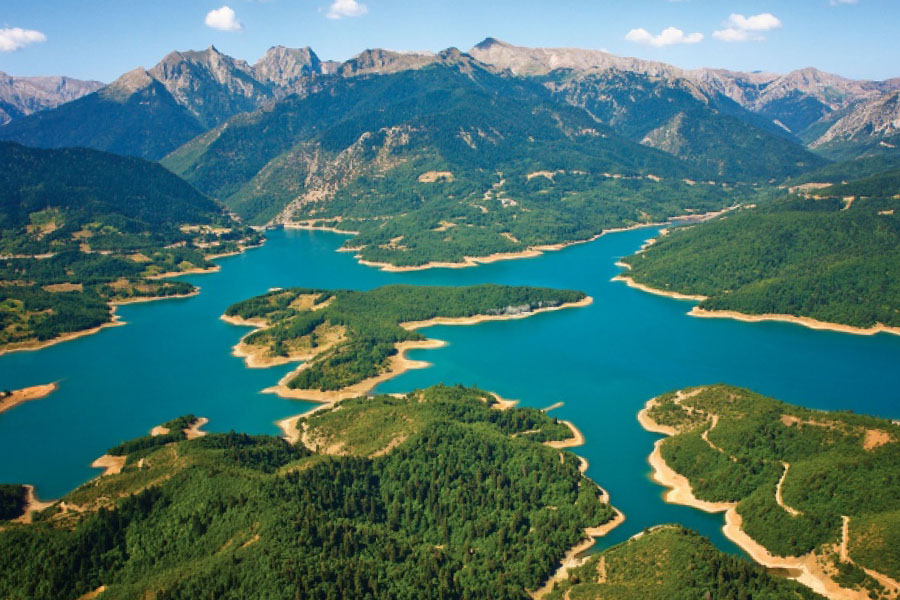
The Rehabilitation and Recovery Center of Thessalia, is very close to the cities of Karditsa and Trikala. The surrounding area is rich in historical, religious and cultural monuments and is strongly suggested for tourism in the summer as well as during the winter.
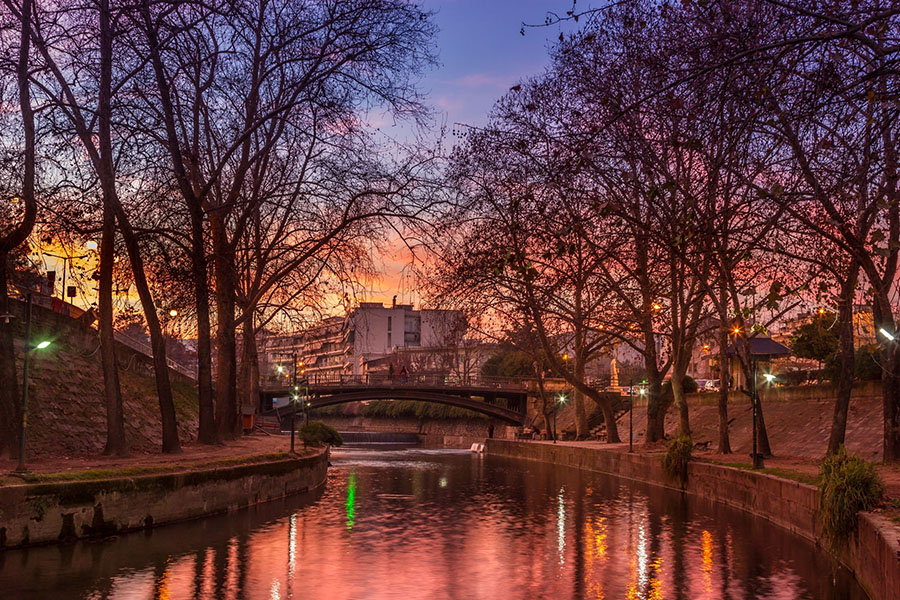
Located at the fertile plain of Thessaly in central Greece, modern Trikala is the Homeric Trikki. According to tradition Trikki was the daughter of Pinios. It was also believed that Trikala was the birthplace of Aesculapius, which explains the existence of the oldest sanctuary to the physician-god, the ruins of which are southwest of the town. This was a kind of medical center, from which the worship of Aesculapius gradually spread. Crowned by its Byzantine castle (The Fortress), at the top of a wooded hill, built on the site of the ancient Acropolis, the picturesque city of Trikala lies on St. Nicholas Heights, by Litheos river, and is divided into two by an old aqueduct.
The castle, which is not far from the temple of Aesculapius, was built in Byzantine times on Hellenistic ruins, and underwent many changes under Ottoman rule. From the Hill of Profitis Elias one has a marvelous view of the valley below studded with big and small villages, the river cutting patterns among them. The churches of Agios Demetrios and Agii Anargyri complete the Byzantine flavor of the town.
A lesser known tourist spot, just 10 kilometres away from the foot of the Pindos mountains, Karditsa marks the western end of the plain of Thessaly. With a good reputation for ecological awareness, sound urban planning and an extensive and impressive network of pedestrian walkways and bicycle lanes, the city is also known as “the Amsterdam of Greece”. Cycling is definitely the best way to explore the city and its nearby attractions, such as the Paparatza Forest or Grove of a Thousand Trees, which has served as a recreation spot since the Ottoman times.
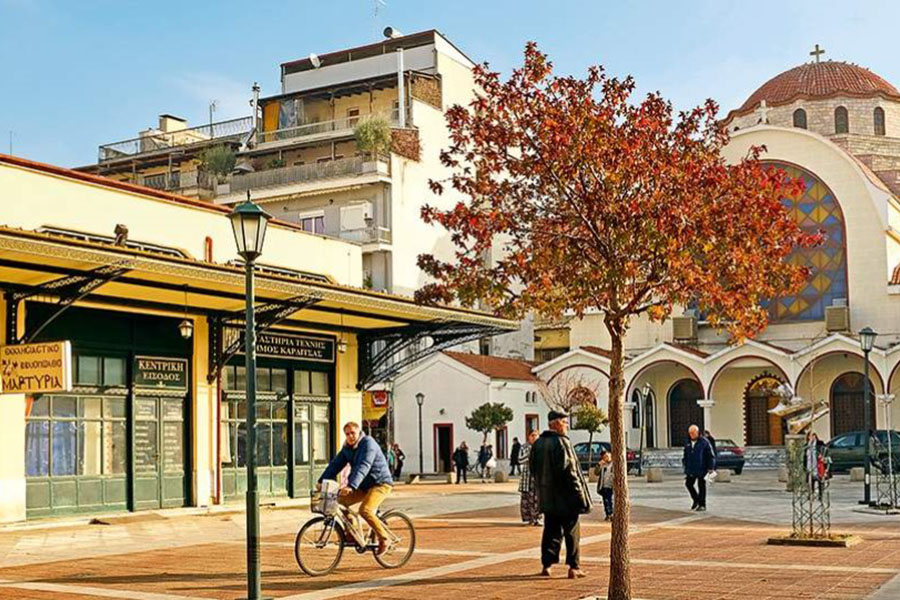
It is the newest city of Thessaly, but you can still capture the aura of its past strolling around Valvi Street, that leads to the impressive Municipal Market; a vestige of the architectural glories of the 19th century, currently home to various cultural events and a shopping center. Having explored the city center, take a rest at the Pafsilipos Park, among couples, families and peacocks that roam freely on the grass. Then head back to the city center to enjoy its multiple sightseeing options such as the Archaeological Museum, the adjacent Municipal Art Gallery and the Municipal Folklore Museum.
ATTRACTIONS
About an hour’s drive to the west of Karditsa, at an altitude of 750 m lies Lake Plastira, one of the top mountain destinations in Greece. The 55 kilometre ride around the lake will fill your eyes with amazing landscapes and your camera with postcard-like pictures reminiscent of the Alps. Perfect for relaxation, Lake Plastira is also ideal for a variety of activities, such as water sports, climbing, horse-riding, archery or paragliding, or simply to enjoy stunning bird’s-eye views of the Agrafa. Proud custodians of the lake, 18 traditional villages will open their doors to you. They all have something special to offer up their sleeve; Neochori and Kalivia Pezoulas are usually thronging with visitors, while villages like Kastania and the fairy tale world of Neraida afford more tranquil, secluded moments and the forests around beautiful Belokomiti alone provide a first class lesson in ecology!
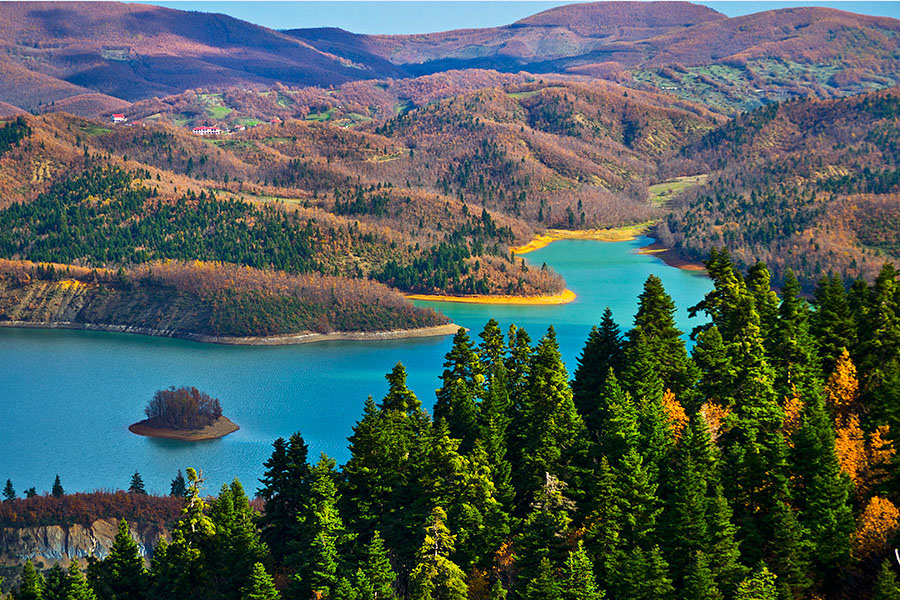
A contemporary city park of 165 acres in the heart of Karditsa, visited by hundreds of people daily, offered for relaxation and pleasure.
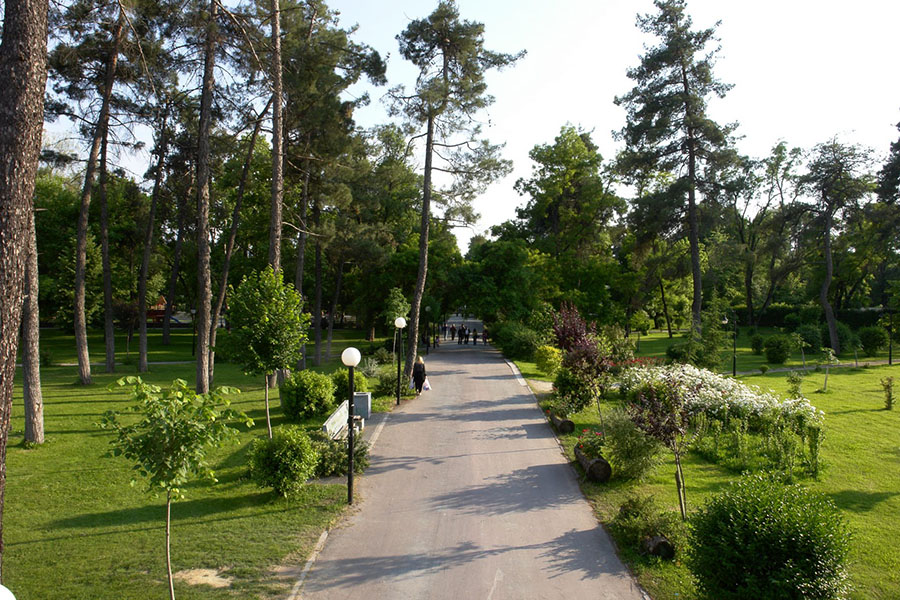
Take a trip to a heavenly green landscape embraced by the southern slopes of the Pindus range. Thousands of square metres of lush vegetation, natural springs, rushing rivers and seasonal lakes create a stunning sight. Pertouli, with its dense forests and high tourist standards, including a small ski resort, is one of the main attractions of northern Greece all year round. Small in size but with an unsurpassable natural landscape, Petrouli’s ski resort is situated near luxury hotels and restaurants. So whether or not you ski, young and old will have fun gliding down the snowy slopes or just keeping warm with a cup of hot chocolate or a glass of wine in Thessaly.
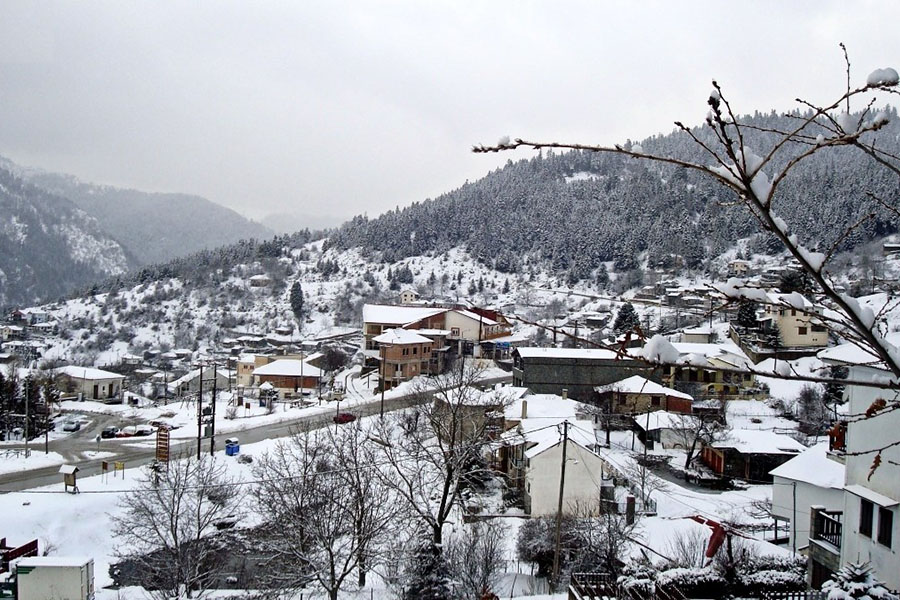
The Mill of Elves (Mylos Xotikon)
The Municipality of Trikala and e – Trikala SA, the Development Company of Trikala, are organizing since 2011, the greatest Christmas festival in Greece. A unique and magical journey starts every year by the end of November and lasts until the beginning of January. The impressive event of “Mill of Elves” is not the only reason that differentiates our city from equivalent destinations chosen for such excursions. The city of Trikala now celebrates through a distinctive way and this is perceived by every visitor who seeks to travel to an affordable, qualitative and vibrant region, taking advantage of the unlimited options and getaways that are offered.
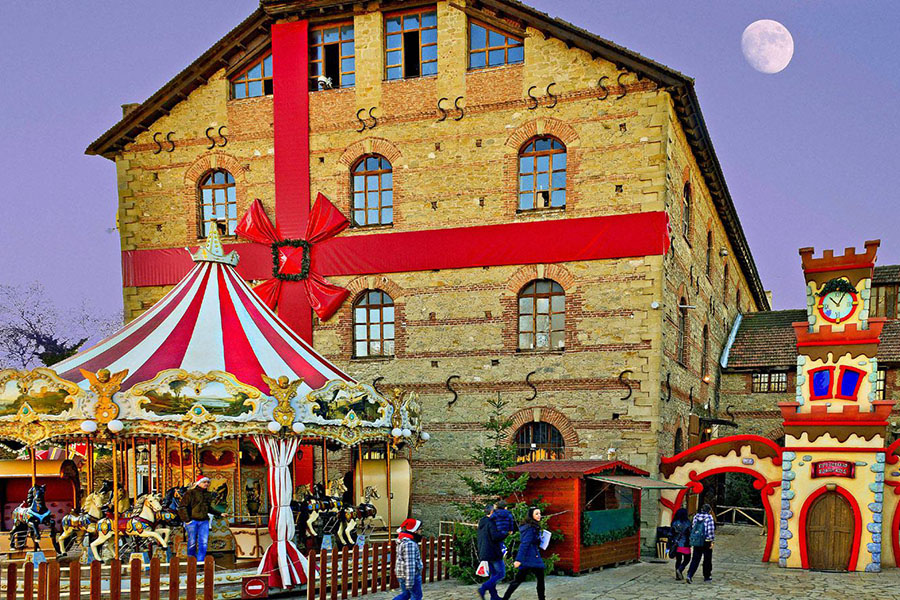
The exact dating of the mosque is uncertain, but it was probably built in the period 1550–60, most likely in the late 1550s. It is also the only mosque still standing in the city of Trikala. The building itself consists of a square prayer hall topped by a large 18 metres (59 ft) diameter semi-spherical dome. The portico (revak) in front, was completely rebuilt in the renovations carried out in 1998. The ashlar minaret is located on the northwestern corner and is well preserved, except for its missing roof. All other buildings attached to the mosque have since vanished, except for the founder's octagonal türbe, which is used as a storage site for artefacts recovered from archaeological excavations. The mosque is no longer used for worship; it now functions as a venue for minor events and is a protected UNESCO site.
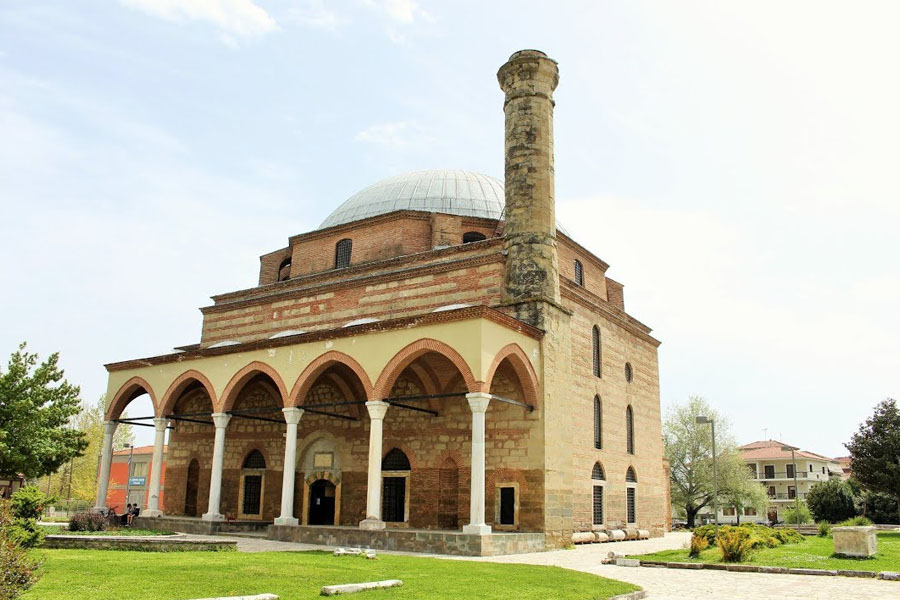
SPOTS OF SPIRITUAL AND RELIGIOUS INTEREST – HISTORIC MONASTERIES MADE OF STONE & FAITH
Serene, spiritual, magical, mystical, extraordinary, breathtaking, immense, inspiring, impressive. These are only some of the words people very often use in an effort to describe the Meteora phenomenon. A trip to Meteora offers the unique experience of nature’s grandeur in conjunction with history, architecture and man’s everlasting desire to connect with the Divine. From the early Christian times, the Meteora vertical cliffs were regarded as the perfect place to achieve absolute isolation, to discover peace and harmony and, thus, to support man’s eternal struggle for spiritual elevation. Meteora is a truly inspiring and sensational setting of overwhelming rock formations, but one must also be prepared to expect that this trip is much more than merely visiting an exquisite landscape. It is a pilgrimage to a holy place for all Christians around the world. Meteora has become a preservation ark for the 2000-year-old Christian Orthodox creed.
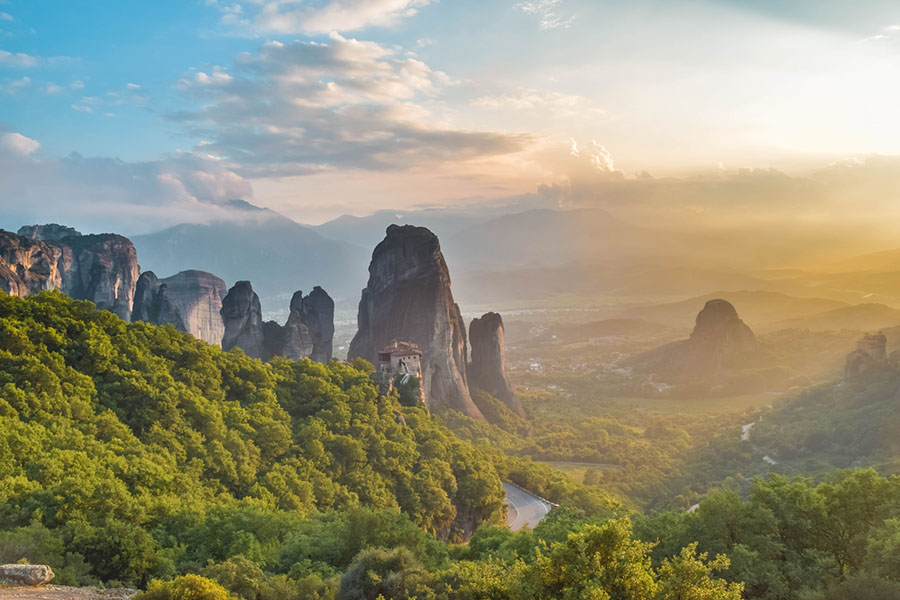
Monastery of Koroni (Panagia Theotokos)
The Monastery of the Nativity of the Virgin Mary is located at a beautiful, wooded location of Agrafa, near Lake Plastira. They used to call it “Kriera Pigi” (Cold Water Spring), but from the beginning of the 18th century it became known as the Monastery of Koroni, possibly due to its location, which dominates at its height and crowns the area like a “corona”, a crown.
According to tradition, it was founded in 1123, when an icon of the Virgin Mary was found at the area. During the period of the Turkish occupation, the monastery maintained its privileges and hosted a school, where important people taught. In the years of the German occupation it found itself in the centre of the fighting and it was destroyed by the German troops in 1943.
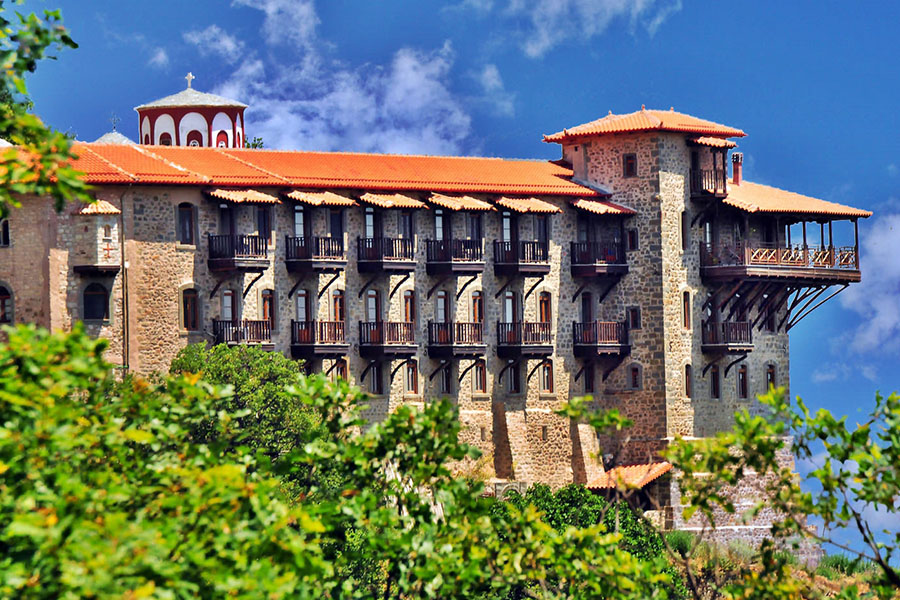
It was reconstructed and renovated after the liberation and today is a men’s monastery. Its history is related to Agios Seraphim, Archbishop of Fanarion and Neochorion. From the complex of the 16th century survive the catholicon and a wing of cells. The catholicon follows the Athonite type of churches, in other words it is a cross-in-square church with three conches and a dome supported by four columns. Its interior is richly decorated with icons from 1587, works of monk Daniel, who follows the Cretan School of painting. Also remarkable is the wooden carved screen of the 18th century, made from folk artists, one of the best of the area, with icons from the 16th and the 18th century.
The Monastery of Panagia Pelekiti
A dashing post-Byzantine monument is built on a steep and high cliff (1400m.) of Pindos, one kilometer northwest of the village Karitsa. Tradition says that it is called "Pelekiti" because the construction of the monastery on the almost vertical rock firstly required the chiseling of the rock with wooden tools, an action indicated by Holy Mary, who appeared to the dream of the craftsmen saying: "You will chisel the rock with the cutter and you will build a church that you will name Panagia Pelekiti".
The Holy Monastery of Panagia Pelekiti is considered to be one of the rarest religious monuments of the 16th century. Here, you can admire many important artifacts such as holy gospels, manuscripts, objects relevant to the church and many more. Do not omit to observe the magnificent wood-carved inner-sanctuary and the mural paintings that decorate the temple. The monastery celebrates the memory of Holy Mary, every year at 15 of August.
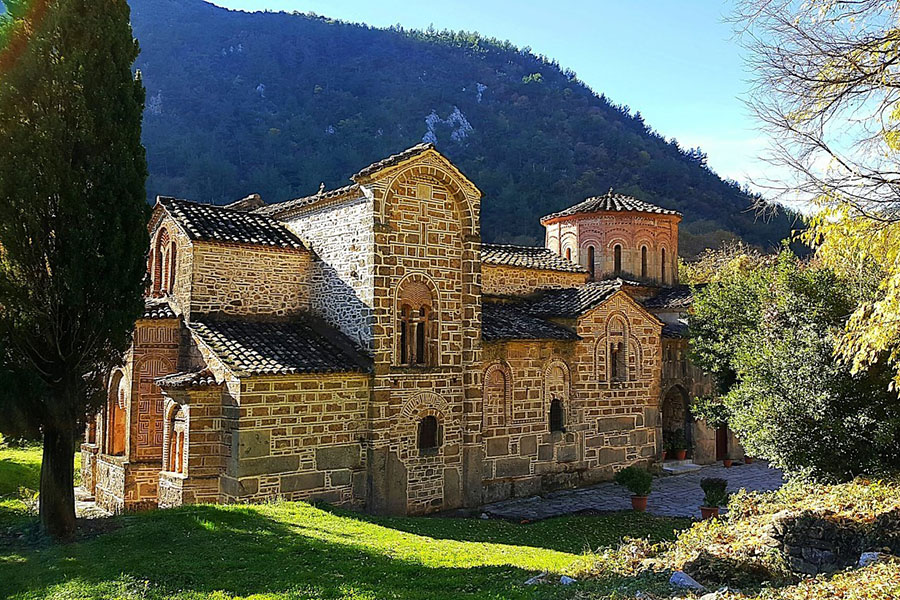
The church is located on the northern bank of the river, in the ruins of the old settlement of Megale Porta or Megalai Pylai, which was razed by the Ottomans in 1822. The modern village of Pyli, formerly Porta, is nearby. The names for both the former and the current settlement mean "door" or "gate" in Greek, and derive from the nearby namesake pass that forms an entrance to the Pindus Mountains.
The church, dedicated to the Dormition of the Theotokos, was originally the katholikon of a stauropegic monastery dedicated to the "Unconquerable Panagia" (Panagia Akatamachetos), founded in 1283 by the ruler of Thessaly, John I Doukas. The monastery's extensive possessions in the region were confirmed by the Byzantine emperors Andronikos II Palaiologos and Andronikos III Palaiologos. The church is the only surviving structure of the old monastery. It passed under the jurisdiction of the nearby Dousikou Monastery in 1843, while continuing to function as the parish church for the village of Porta.
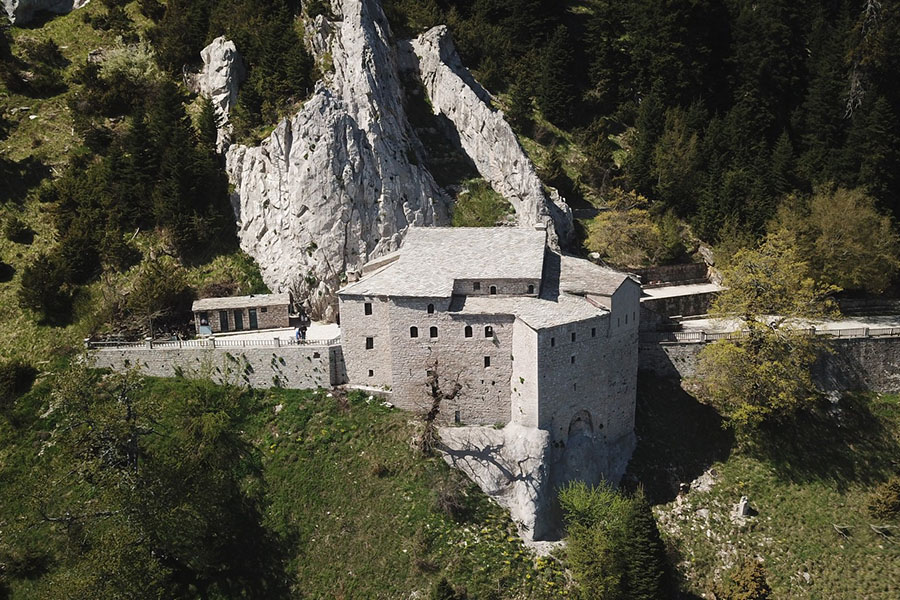
MEDITERRANEAN DIET
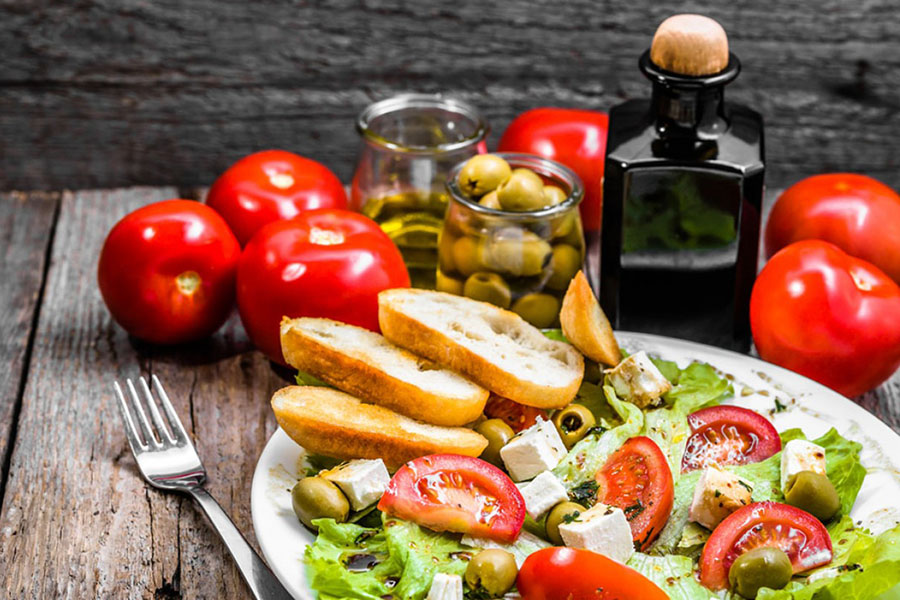
It is essential for all the patients to have the right amount of protein, calories, fluids, vitamins and minerals each day. To strive towards being healthy and happy dialysis patients, they would need to: eat the right kind and right amount of food on a daily basis.
Vegetables, bread and whole-grain cereals, potatoes, beans, nuts and seeds. Extra virgin olive oil (cold pressed) as an important monounsaturated fat source. Eggs, dairy products, fish and poultry are consumed in low-to-moderate amounts.
A healthy and balanced diet can help improve your general health and reduce risk of developing further problems.


